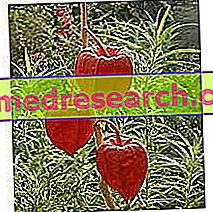Related articles: Polycythemia vera
Definition
Polycythemia vera is a chronic myeloproliferative syndrome characterized by an increase in the red cell mass. At the base of the disease there is a clonal expansion of transformed hematopoietic stem cells. In fact, in the polycythemia vera, there is a population of normal stem cells and another that shows mutations that can cause the disease.
The most common mutation found in affected patients leads to a constitutive activation of the JAK2 protein, which causes excessive cell proliferation, independent of erythropoietin levels. Polycythemia vera involves a trilinear hypercellularity (panmielosis): the examination of the bone marrow reveals a mainly erythroid hyperplasia, but also granulocyte and megakaryocyte. In polycythemia vera, therefore, the blood volume expands and hyperviscosity develops, therefore the risk of developing thrombotic events increases.
Polycythemia vera is slightly more common in men. The average age at diagnosis is around 60 years; very rare cases are found in the pediatric age.
Most common symptoms and signs *
- Tinnitus
- Tinnitus
- Anemia
- Redness of the face
- Asthenia
- Cyanosis
- Intermittent claudication
- Muscle cramps
- Dyspnoea
- Gastrointestinal hemorrhage
- Hepatomegaly
- erythrocytosis
- erythromelalgia
- Temperature
- Sore legs
- Swollen legs
- Legs tired, heavy legs
- hypersplenism
- Livedo Reticularis
- macrocytosis
- Headache
- Eyes reddened
- Paresthesia
- Weight loss
- thrombocytopenia
- itch
- Acquagenic Itching
- Leg itch
- Itching in the hands
- scotomas
- Raynaud's syndrome
- splenomegaly
- Confusional state
- thrombocytosis
- Dizziness
- Double vision
Further indications
Polycythemia vera manifests itself with symptoms often due to the increased number of red blood cells and blood hyperviscosity. More frequently, appear asthenia, headache, tinnitus, visual disturbances (scotomas and diplopia), dizziness and dyspnea. Claudication, thrombophlebitis, acrocyanosis (with Raynaud's phenomenon) and paresthesia are easily detectable signs.
The face of the patient suffering from polycythemia vera can take on a characteristic red color and the conjunctiva may appear congested. Itching is a very frequent symptom, which is found especially after a hot bath. Mild bleeding manifestations may be present. However, bleeding and / or thrombosis can dramatically begin if they affect the vascular structures at the level of vital organs, such as brain (cerebral stroke), heart (myocardial infarction or angina pectoris), lungs (pulmonary embolism) and gastrointestinal tract (heart attacks mesenteric).
In 3 patients with polycythemia vera out of 4 there is a splenomegaly, almost always due to myeloid metaplasia (called "phase off", where the hematological parameters are stable). The disease, over the years, determines an increase in marrow fibrosis, leucositosis and thrombocytosis and a progressive anemization. Hepatomegaly, low-grade fever and weight loss may also occur.
The most frequent causes of death are represented by thrombotic and / or hemorrhagic complications or by pathologies in which polycythemia vera may be present (acute leukemia and myelodysplasia).
The diagnosis is made on the basis of blood counts, search for mutations against JAK2 and clinical criteria, including Hb> 18.5 g / dl in men and> 16.5 g / dl in women (or other evidence of increase in red cell mass). Minor clinical criteria for polycythemia vera include the detection of a hypercellular bone marrow for age, with trilinear growth (panmielosis) and erythroid, granulocyte and megakaryocyte proliferation; serum levels of erythropoietin lower than the normal range and formation of endogenous erythroid colonies in vitro can also be appreciated.
The treatment aims to reduce the erythrocyte mass, thus maintaining normal blood viscosity and controlling cell proliferation. Therefore, cytoriductive therapies (hydroxyurea or interferon), low dose aspirin (or other antiplatelet agents) and phlebotomy can be used.



